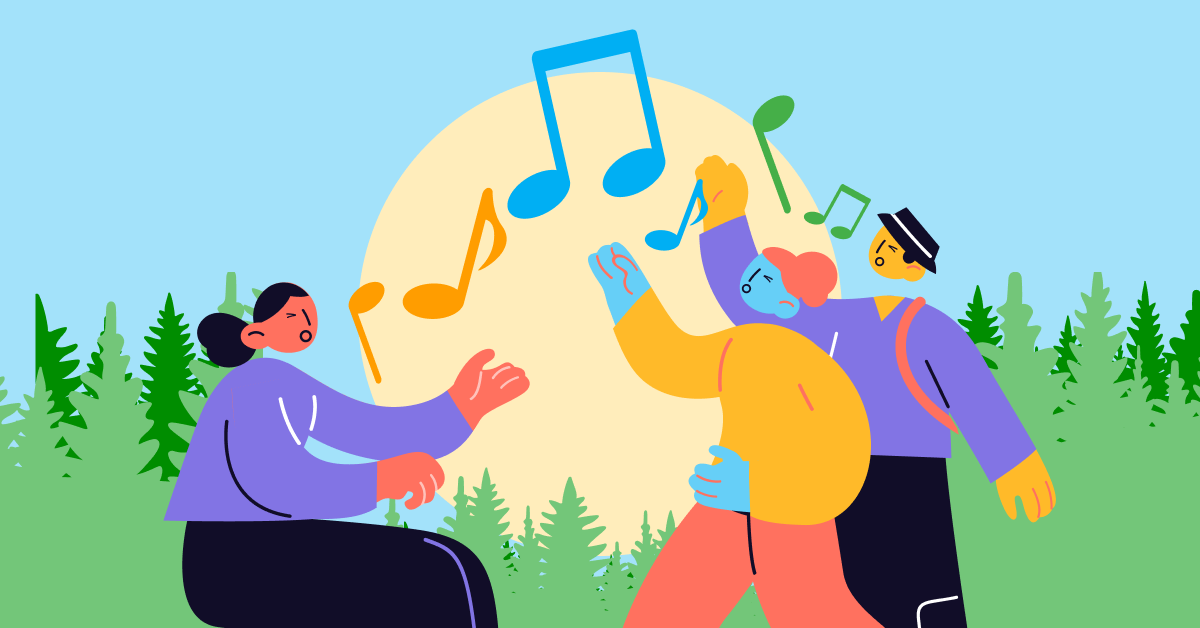Nature and the arts for your health’s sake
Have you thought about how experiences in nature and of the arts impact how we feel? Research shows that both wandering out in nature and getting involved in the arts like singing and handicrafts can prevent illness and improve our well-being.
No matter how much we want to, it can be difficult to prioritize leisure above the day’s many obligations. But maybe it is time to begin to view our fun-filled interests as more than just something we do to enjoy ourselves? Packing your backpack and heading out into nature, going to an art exhibition, or spending time practicing music can alleviate both physical and psychological pain, and can even be used as a part of treatment or rehabilitation.
Two “outside hours” a week make a difference
A very comprehensive British study—with almost 20,000 participants—shows that people who spend at least 120 minutes a week out in nature experience better health and higher grades of well-being than people who spend no time at all in nature during an average week. The information comes from Natural England’s Monitor of Engagement with the Natural Environment Survey (MENE).
According to the study, it does not matter if those 120 minutes are continuous or if the trips are broken up into several shorter occasions. The threshold of 120 minutes to achieve this effect applies to both men and women, older and younger adults from any professional and ethnic groups as well as any socioeconomic and health statuses.
The study shows even more reasons to spend time outdoors. Nature helps us to get perspective on life and is a place for reflection, recovery, and quality time. It also contributes to the reduction of our stress levels. (1)
WHO reports an association between the arts and health
During the past two decades, research of the arts’ impacts on health and well-being has truly taken off. WHO, the World Health Organization, has compiled results from over 3,000 scientific studies specifically about the association between the arts and health, and their report states that arts in the form of literature, visual arts, music, and dance can help those who are chronically ill and living with pain.
The results of the studies show, among other things, that art therapy can help with the self-management of chronic and long-term conditions. Art has also proved to reduce physical and psychological suffering and the side effects of medication. Dance therapy can soothe symptoms of psychological illness and music therapy can have a beneficial impact on individuals with cardiovascular diseases. Furthermore, singing has been found to alleviate chronic conditions of the respiratory system and in cystic fibrosis.
Research has also found that the arts on prescription can reduce anxiety, depression, and other adverse mental states. (2)
The arts with a focus on well-being
Research in this area has even been conducted in Sweden in a Swedish context. In a collaboration between the Danderyd Specialized Pain Rehab Clinic and the region of Stockholm’s Cultural Committee participants of the study were given the opportunity to dance, to go to art exhibits, to visit libraries, and to take part in handicrafts.
It was shown in the project that the activities made it possible for the participants to escape their daily lives for a moment, which to a large extent involved pain and its management. The participants were gradually less burdened by their disease as they took part in the different activities. The arts accentuated the healthy aspects in these individuals, not the illness or limited capabilities. (3)
Singing releases feel-good hormones
Christina Grape Viding has worked as a nurse for 30 years and is a doctoral student at the Department of Public Health and Caring Sciences at Uppsala University. She has studied how amateur and professional singers are affected during a singing class. 13 of the 16 singers showed an increase in oxytocin, which is sometimes called the hormone of calm, and which increases our well-being.
“Our bodily system is always active and present during singing. We become more relaxed, work on our breathwork, and through that, we become more capable of managing stress. It can be interpreted as though singing provides little showers of feel-good hormones,” Christina states.
“Music impacts us more than we think, and it can give rise to intense experiences. We are forced to be present here and now. It improves our bodily awareness and provides a sense of being involved in something greater,” Christina explains. (4)
